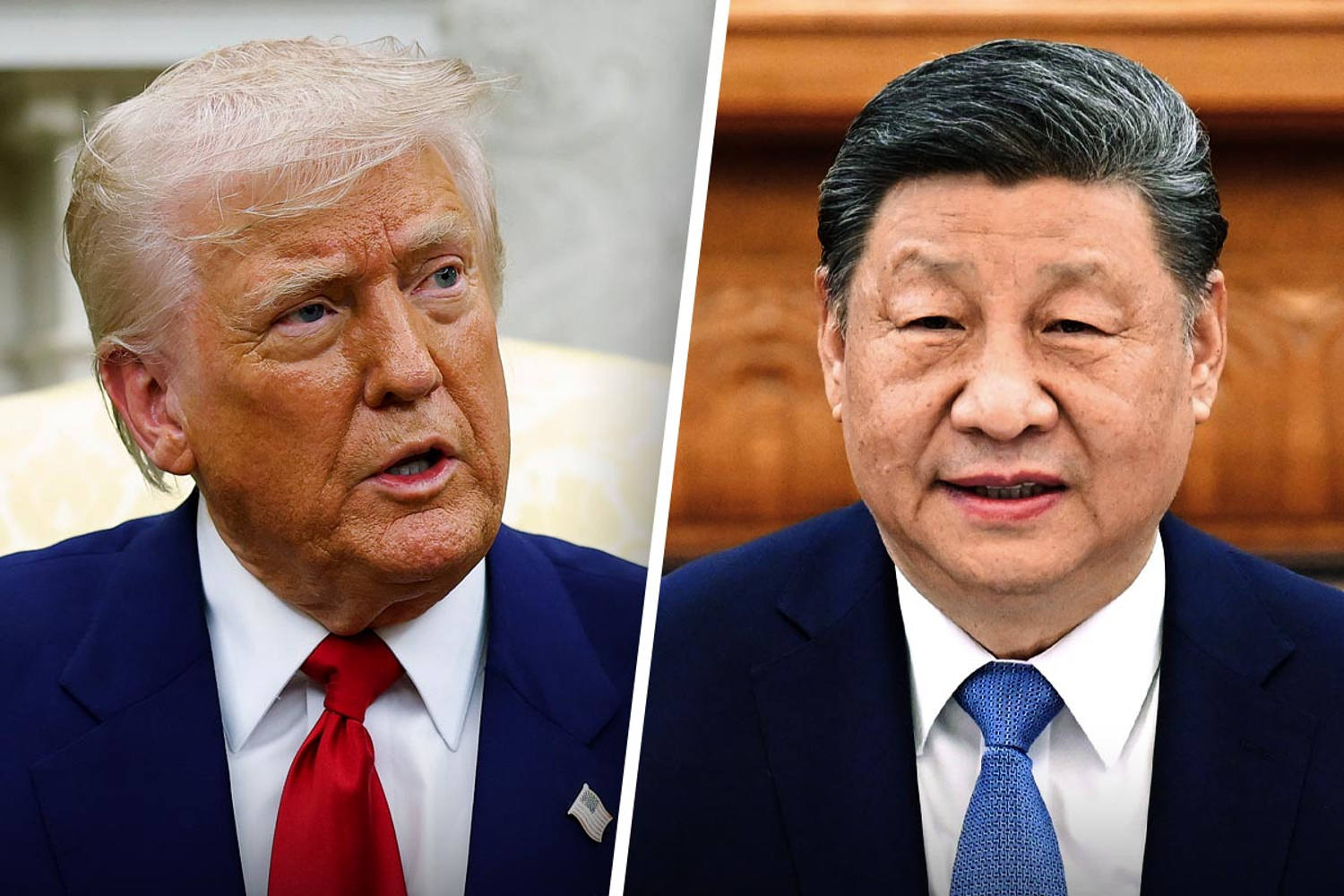
Facing intense pressure from Wall Street and newly spooked by the alarming drop in the bond market, President Donald Trump largely reversed course on his global trade war Wednesday. But for China — which happens to be the world’s most important trading nation and second most powerful country — Trump massively escalated his punishing tariffs.
In the space of a week, Trump threw away an opening for negotiations that could have calmed the dangerous tensions between the United States and China. Instead, the two countries have plunged into a bitter zero-sum struggle over power, growth and dignity. If the conflict persists, both sides will suffer serious economic pain. The global economy faces debilitating uncertainty: Will supply chains simply unravel or somehow adjust? And worse still, economic tensions could turn already ominous military disputes into something far more dire.
That the Trump administration ended up in a confrontation with China is hardly surprising. Not only did Trump enter a trade war with China in his first term, but the disparate factions jockeying for influence around Trump see conflict with China as desirable in its own right.
One pole of thinking is occupied by lapsed neoconservatives like Secretary of State Marco Rubio. For them, China’s aim is nothing less than to destroy the vitality of American society. The United States represents freedom and so poses an ideological threat to Chinese Communist tyranny.
A second group, military realists led by Undersecretary of Defense for Policy Elbridge Colby, dismisses the lapsed neocons’ moralizing. In the second group’s eyes, China is a threat because, like any great power, it wants to do to the United States what we are already doing: wielding power over the world’s economic and military systems to impose our interests.
Then there are nationalists like White House trade adviser Peter Navarro, who interpret the interdependence between the two countries as Chinese “economic aggression.” They seek to split the two economies from each other in order to realize their dream of 1950s industrial manhood. More than that, they demand the exclusion of Chinese people from American universities and markets on the grounds that they may be under the control of the Communist Party due to brainwashing or an alien culture.
Finally, key economic officials led by Treasury Secretary Scott Bessent believe that China has rigged financial flows in its favor to support an aggressive foreign policy. Only a sharp break with open exchange, they argue, can force China in a different direction.
Despite sometimes intense differences of motivations and aims, all these factions find common ground on confronting China. The shared understanding is best summed up by Heritage Foundation President Kevin Roberts in his foreword to Project 2025. China, he maintains, “stole our technology, spied on our people, and threatened our allies, all with trillions of dollars of wealth and military power financed by their access to our market.” China has subverted our country hand in glove with the “woke Left” — globalist elites in big business, public institutions and popular culture — who through stupidity or malice betrayed America. Power must be centralized in the hands of the president, Roberts writes, in order to purge the country of these un-American elements.
The other common thread connecting the different factions is that they all reduce the U.S.–China relationship to a winner-take-all contest. They ridicule the idea that the two countries might have shared interests, like global economic stability or resolving the climate crisis. They ignore the possibility of positive-sum relations, wherein economic or cultural exchange could leave both sides richer.
The president and those around him also reject a shared reform agenda for the global economy, which could overcome the zero-sum dynamics pushing the United States and China into conflict. This agenda would not be defined by one side obliterating the other but by joint efforts opening enough space for each country to thrive.
For example, a global system of labor rights combined with robust provision of global public goods and dramatically expanded investment in development would lead to faster and more egalitarian global growth than today’s inequality-inducing economic system. That is not only desirable in itself, it would also create opportunities for business in both countries to expand even as it reduces the competitive pressures currently crushing American and Chinese workers alike.
As the economic devastation of his decisions mounts, Trump may step back from the brink with China, as he has with other countries. But until the U.S. government cooperates with foreign countries to address the structural inequalities in the global economy, the danger of mutually destructive economic warfare with China and every other nation will continue to loom over us.
